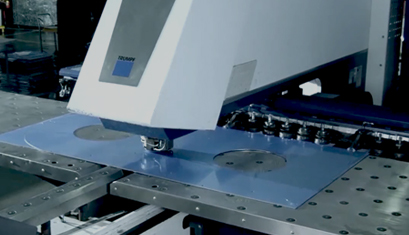Fans can easily lead to unplanned shutdowns or load shedding operations due to poor operating conditions and high failure rates, which affect normal production. Fan vibration is a common phenomenon in operation. It will not cause significant impact as long as it is within the vibration control range. However, if the fan vibration exceeds the standard, it can cause damage to the bearing seat or motor bearings, loosening of motor foundation bolts, damage to fan housing, blades, and air ducts, burning and heating of motor, and other faults, which can reduce fan’s working performance and even unable to work at all. More serious, accidents may also occur due to vibration, which is harmful to personal health and working environment. Therefore, it can achieve a multiplier effect by identifying the cause of over-standard vibration, and analyze according to different phenomenon with appropriate solution. The reasons for fan vibration are summarized as follows:
The vibration caused by rotor mass imbalance accounts for the majority of fan bearing vibrations that occur on site. The main causes of rotor mass imbalance are:
1 Impeller wear (mainly blades) is uneven or corroded.
2. There is uneven accumulation of dust or attachments (such as rust) on the surface of blades.
3. The hollow blades or other cavities of the wing are sticky with dust.
4. Local high temperature of spindle causes bending.
5. The impeller was not balanced after maintenance.
6. Insufficient impeller strength causes impeller cracking or local deformation.
7. Loose parts or connections on impeller.
Characteristics of vibration caused by rotor imbalance:
1. The vibration value is maximum in horizontal, while axial direction is very small, and vibration at load-bearing seat is greater than that at thrust bearing.
2. The amplitude increases with increasing revolutions.
3. Vibration frequency is equal to rotational speed frequency.
4. Vibration stability is relatively good and not sensitive to load changes.
5. When there is ash sticking inside the hollow blade or individual parts are not welded firmly and displaced, the measured phase angle value is unstable, and its vibration frequency is between 30% and 50% of working speed.
Vibration caused by friction between dynamic and static parts, such as friction between outlet of collector and inlet of impeller, friction between impeller and housing, and friction between main axis and sealing device. The vibration characteristics are:
1. Vibration is unstable.
2. Vibration is self-excited and independent of rotational speed.
3. When friction is severe, reverse vortices may occur.
Vibration caused by abnormal rolling bearings
(1)Vibration caused by poor assembly of bearings: If axis neck or shoulder is poorly
processed, such as the axis neck is bent, the bearing installation is tilted, it will cause misalignment with axis line after bearing inner race is assembled. Each revolution of bearing produces an alternating axial force, causing local vibration due to loosening of fixed circular nut for rolling bearings.
(2) Vibration caused by surface damage of rolling bearings: Poor foundation grouting, loose anchor bolts, loose gaskets, and unstable base connections will all cause severe forced resonance. The characteristics of this vibration are:
1. Vibration of bearing seat at problematic anchor bolt is the highest, and the radial component is the highest.
2. The vibration frequency is an odd frequency combination of 1, 3, 5, and 7 times at rotational speed, with the highest component value of 3 times being its frequency domain features.
Vibration caused by abnormal coupling 20190919224821.gif. Improper installation of coupling, misalignment of fan and motor axis, and failure to consider compensation for axial displacement during operation when aligning fan and motor axis, all these will cause vibration of fan and motor. The vibration characteristics are as follows:
1. Vibration is uncertain and varies sharply with load. It is light at idle and large at full load, with good vibration stability. The larger the axis deviation, the greater the vibration.
2. The motor runs alone and vibration disappears.
3. If radial vibration is large, two axis lines are parallel, and if the axial vibration is large, the two axis lines intersect.





